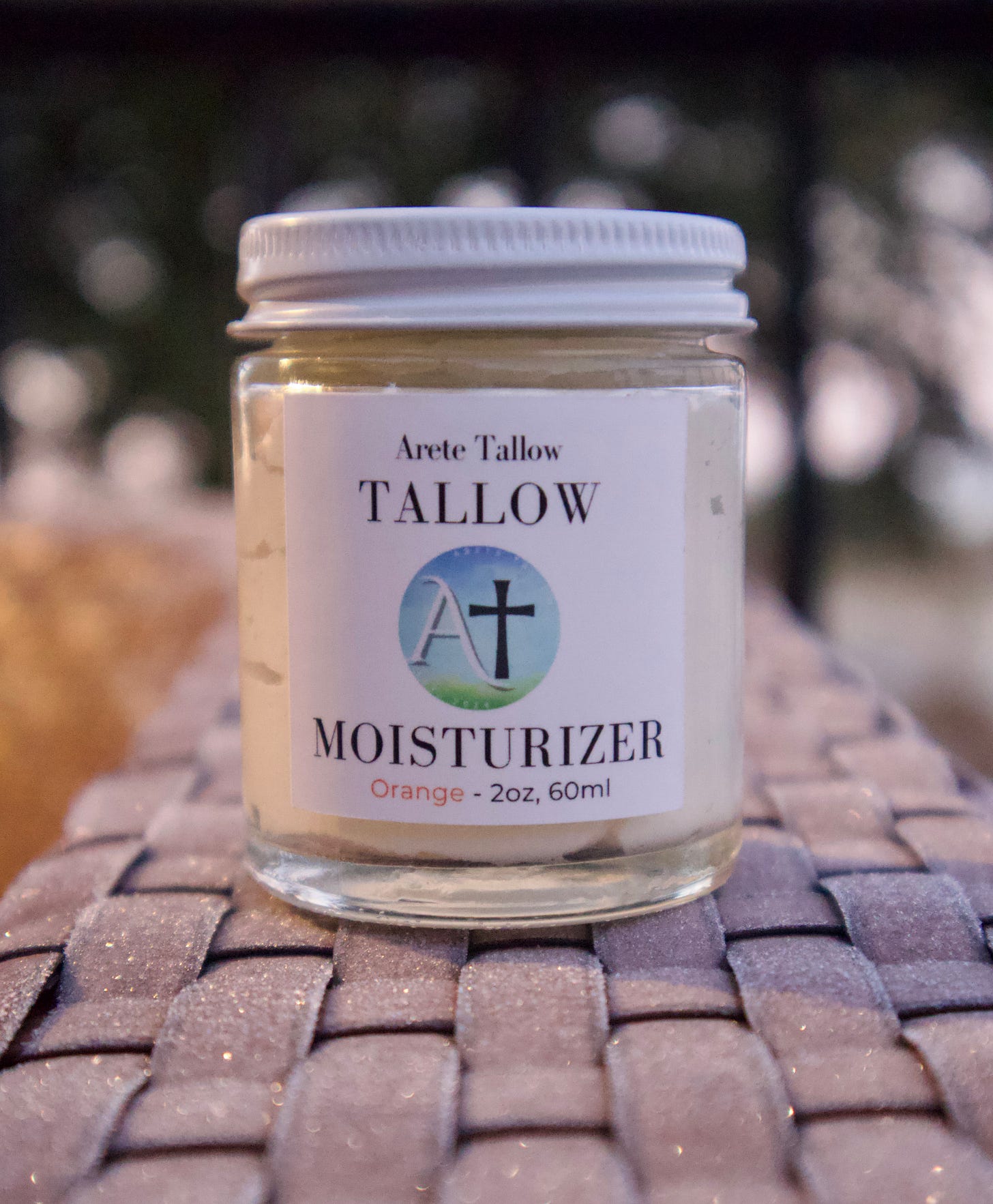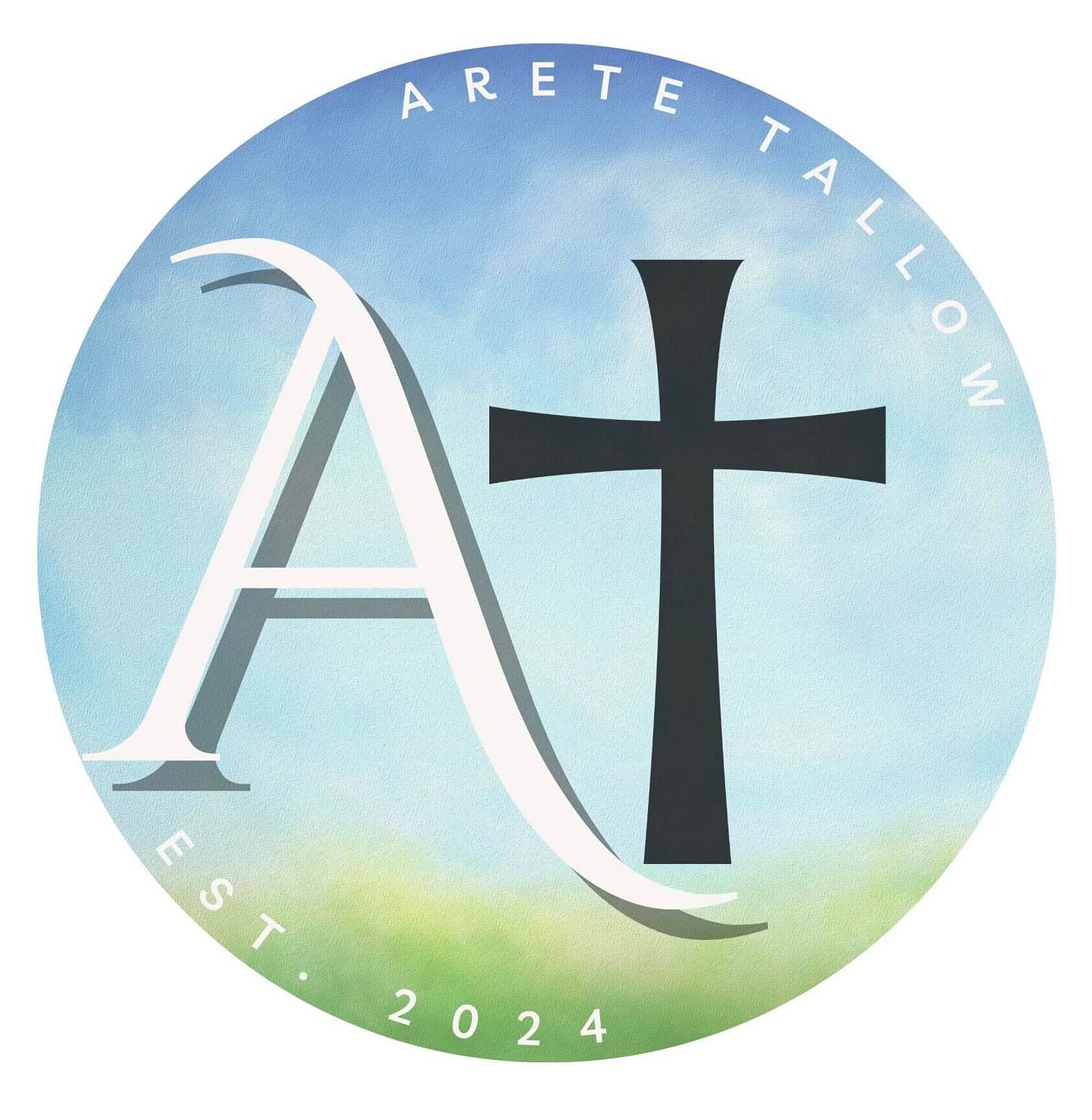Wet Rendering vs. Dry Rendering Suet: Which is Better?
A deep dive into the methods for rendering tallow.
If you’re diving into the world of tallow skincare, you’ve probably come across two main methods for rendering suet: wet rendering and dry rendering.
But which method is better? (Spoiler: It just might be both 🤷♀️🤭)
Let’s take a closer look at each technique, its pros and cons, and why I use a combination of both to create my tallow moisturizer.
Wet Rendering: The Good, The Bad, and The Ugly
What is Wet Rendering?
Wet rendering involves simmering suet in water over low heat. As the fat melts, it separates from any impurities or connective tissue and rises to the surface. Once cooled, the tallow solidifies, and the water layer can be discarded.
Why Choose Wet Rendering?
Cleaner End Product: The water acts as a barrier, preventing the fat from burning and reducing impurities.
Milder Smell: Wet rendering typically reduces any odor in tallow more effectively than dry rendering.
Better for Skincare: The process helps retain the delicate nutrients in suet, like fat-soluble vitamins and omega fatty acids. (Hello, that's kinda the point of tallow!)
Drawbacks:
Time-Consuming: The process is slower and requires more steps, such as straining and cooling.
Potential for mold: If not handled properly, tallow that still has water residue is potentially susceptible to mold.
Less Yield: Wet rendering can result in slightly lower fat yields compared to dry rendering.
Dry Rendering: The Good, The Bad, and The Ugly
What is Dry Rendering?
Dry rendering skips the water. Suet is heated directly (usually in a crock pot) until the fat melts. Impurities are then strained out, leaving behind pure tallow.
Why Choose Dry Rendering?
Higher Yield: Without water diluting the process, you’ll often get more tallow from the same amount of suet.
No Water: Because no water is involved, there is no chance for mold.
Great for Soap Making: Dry-rendered tallow’s slightly stronger aroma and deeper color are well-suited for soap and industrial uses.
Drawbacks:
Risk of Burning: Without water as a buffer, the fat can scorch if not carefully monitored.
Stronger Odor: The smell of rendering fat can be intense (and linger in your kitchen - been there 😬).
Potential Nutrient Loss: Higher heat can degrade some of the beneficial nutrients found in suet. Uh-oh!
All Said and Done: The Final Answer
When it comes to skincare, why choose one method when you can have the best of both worlds?
My process (which is always evolving and improving 😁) combines both wet and dry rendering. I wet render my suet three times to ensure it’s as pure, odorless, and nutrient-rich as possible. This removes impurities while preserving those all-important vitamins and fatty acids. Then, I melt the tallow one last time to make sure there is no water residue. I do this only on low temperatures to preserve the nutrients in the tallow.
This dual-method approach balances purity, yield, and nutrient retention, resulting in tallow that’s ideal for skincare. It’s clean, creamy, and deeply nourishing—everything you want for a moisturizer base.
Why It Matters: The Bigger Picture
The rendering is the first step in making tallow moisturizer.
It is important to start this process in a way that will work harmoniously with your body’s biology, and truly help it flourish. Using grass-fed suet ensures that the tallow is packed with nutrients and free from harmful additives.
Ready to experience the benefits for yourself? My Etsy shop is stocked with handcrafted tallow-based products, from moisturizers to lip balms, cuticle creams, and soap. Each one is made with care, using only the best rendering methods and ingredients.
Shop now and treat your skin to the nourishment it deserves!
Thanks for reading,
Serena



